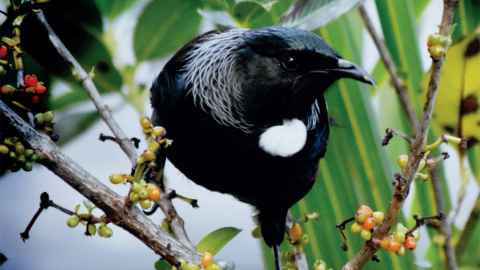169 islands that could help stem extinction crisis – NZ on list
28 March 2019
In a major international collaboration of scientists, researchers and conservationists has drawn up a list of 107 islands that could stem the extinction crisis. New Zealand has five islands on the list.

Forty institutions, including universities and major conservation organisations such as Birdlife International and the International Union for Conservation of Nature (IUCN), contributed to the assessment of islands which range from the Galapagos Archipelago to Great Barrier in the Hauraki Gulf. It is published today in the journal PLOS One.
“We already know islands are a vital conservation opportunity but this study gives us the bigger picture, a list of locations where the most progress could be made,” says Associate Professor James Russell from the University of Auckland, who contributed to the research.
“One of the study’s most important aspects is that it not only assesses the feasibility of eradicating predators on these islands but assesses how feasible this work would be from a political and socio-economic point of view.”
Restoring islands by eradicating damaging, non-native invasive mammals such as rats, cats, goats and pigs has repeatedly proven to achieve results and make a major contribution towards stemming the global extinction crisis.
Initiating restoration projects on 107 islands with a total land area of 1623 sq km could save 151 populations of 80 threatened species.
Up to now, more than 1,200 projects to eradicate invasive mammals on islands globally has had an average success rate of 85%.
Dr Russell says New Zealand is one of the most experienced countries in the world in island pest eradication and has lent expertise to a wide range of island projects from Mexico to the Pacific.
“New Zealand has been offering support to other countries for some time and is seen as a global leader in this area with our own ambitious targets such as pest-free Auckland Island and Predator Free New Zealand.”
The researchers used biological and geographic data compiled for 1,279 islands with 2,823 populations of 1,184 bird, reptile and mammal and amphibian species listed as Critically Endangered or Endangered by the IUCN Red List of Threatened Species.
The study identified 107 islands where eradication of predators could be started by 2020 and a further 62 islands where work could begin by 2030 to benefit 9.4% of the world’s threatened island species in total.
The five New Zealand islands included in the study are Auckland Island in sub-Antarctica, Slipper Island off the coast of the Coromandel Peninsula, Great Barrier Island in the Hauraki Gulf, Kawau Island in the Hauraki Gulf and Motukawanui Island in the Cavalli Islands group in Northland.
Lead author of the study and Director of Science at the international conservation group Island Conservation, Dr Nick Holmes, says islands currently support 36% of bird, mammal and amphibian and reptile species that are classified as Critically Endangered by the IUCN.
International Conservation has listed the islands along with photos and video of some of the species that could benefit from island restoration.
Media contact
Anne Beston | Media adviser
DDI 09 923 3258
Mob 021 970 089
Email a.beston@auckland.ac.nz